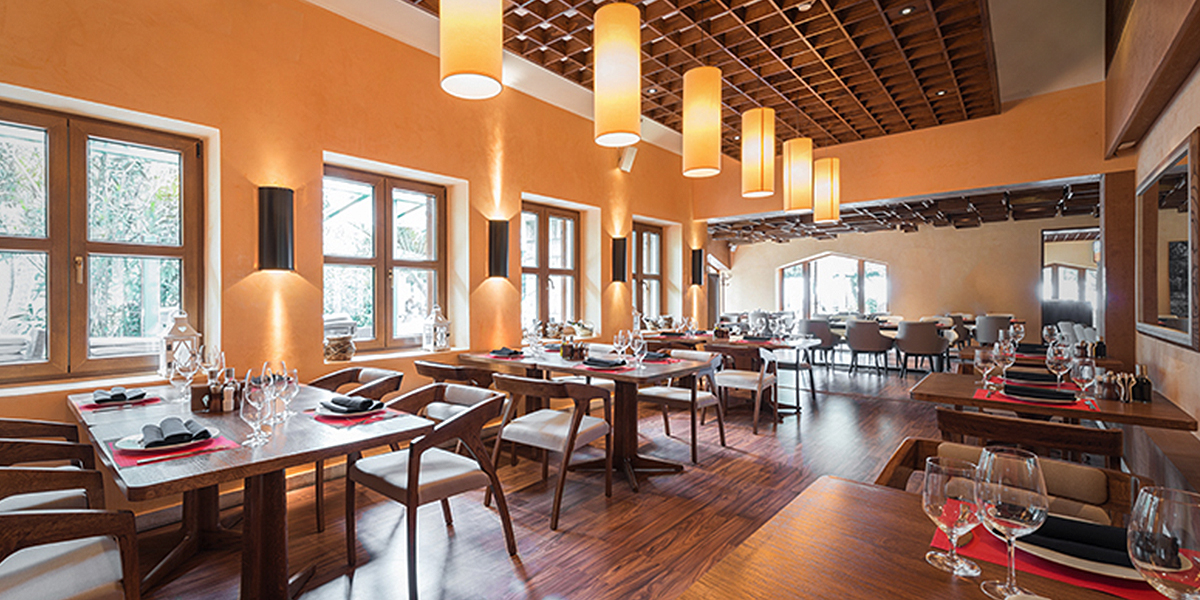
Six Ways to Maximize Dining Room Space
Expert advice to balance guests' needs with available floor space

By Barry Shuster
There isn't one ideal distance between restaurant tables, says Stephani Robson, Ph.D., a faculty member and researcher at Cornell University School of Hotel Administration. That said, she offers the following advice that balances your guests' need for personal space and the most efficient use of floor space.
- Where rectangular tables are aligned along a wall or down the middle of the room, the distance from the edge of one table to the next should be between 38 and 42 inches, depending on the size of the chair. Chair backs should never touch each other.
- For rows of square tables that are placed on the diagonal, the distance from one table's corner to the corner of the next table should be about 32 to 36 inches; a bit more if you have very large chairs.
- Along banquettes, position the tables about 18 inches apart. This distance is far enough away for most people to be able to easily pass between tables and creates a good sense of separation from adjacent parties; but takes up less floor space than 24-inch spacing.
- Aisle ways between rows of tables should be around 38 to 42 inches. Try to avoid making aisles wider than this as having tables too widely spaced is probably not the most effective use of your dining area.
- For seats along a counter, such as at the bar or in front of an open kitchen, the center point of each seat should be about 24 inches from the center point of the next.
- Booths can be much more closely spaced because of the way they allow guests to control personal space. It is typical for there to be as little as 4 to 6 inches between booths. Because booths are so efficient, some restaurants have made them a key element of their interior design; but millwork like this can get expensive and booths lack flexibility if you host a wide range of party sizes.
Robson cautions operators to always take into account their predominant customers. The latest hot new concept can probably get away with slightly tighter spacing because guests are likely to be happy to get a table. If guests typically come in with strollers, suitcases or armloads of shopping bags, add a couple of inches to table spacing and aisle ways.
If your customers are mostly Baby Boomers, you'll want the spacing to be a bit more generous so that conversations are more comfortable; however, don't go much beyond 42 inches from table edge to table edge. Says Robson, tables that are too widely spaced may make people feel a bit too exposed.
Barry Shuster is associate publisher and editor-in-chief of Restaurant Startup & Growth, the official magazine of RestaurantOwner.com, where you can sign up for a free trial subscription to the magazine.
Read Related Stories:
Are Your Garnishes Working Hard Enough?
Sustainability Is Key to Growing Your Foodservice Business